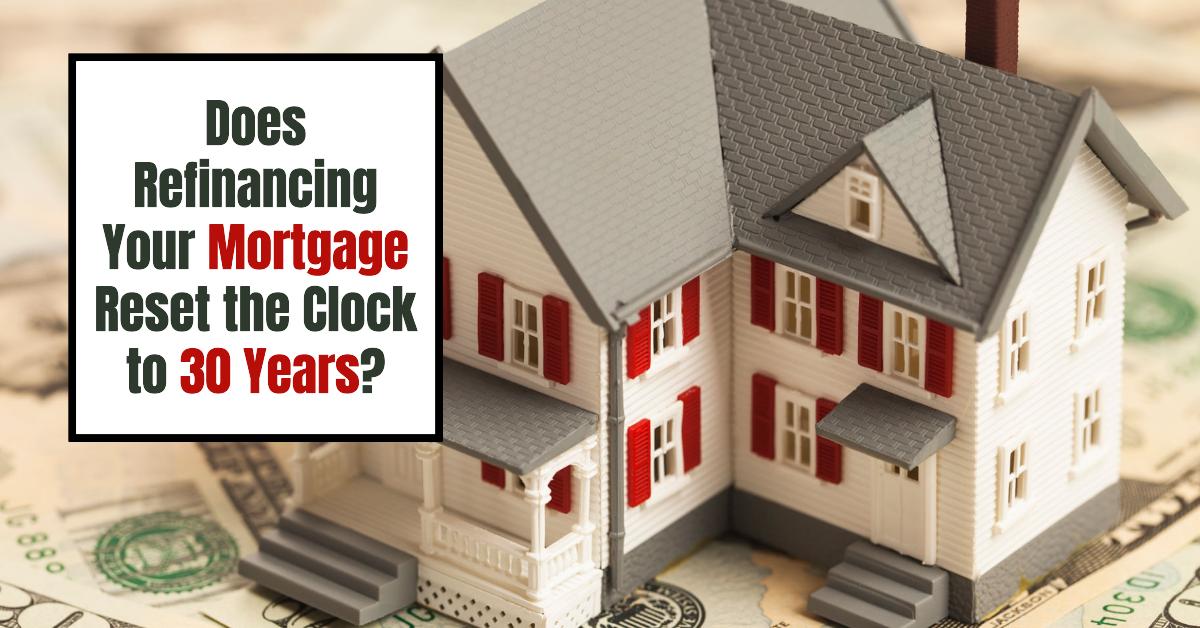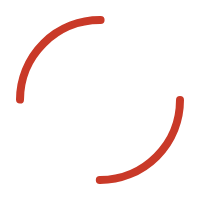Thinking about refinancing your mortgage? It's a smart move many homeowners consider, especially when interest rates wiggle around like they've been doing. One of the big questions that pops into almost everyone's head when they start looking into refinancing is: When you refinance a mortgage, do the 30 years start over?
The short answer is: it depends, but often, yes, refinancing can reset your mortgage term back to 30 years, or whatever new term you choose.
But before you groan at the thought of potentially adding more years to your loan, let’s really dig into what this means, how it works, and if it's actually the right move for you. This isn’t just about resetting a clock; it's about understanding the bigger picture of your homeownership and financial goals.
Table of Contents
When You Refinance a Mortgage Do the 30 Years Start Over?
What Exactly is Mortgage Refinancing Anyway?
Let’s start with the basics. Mortgage refinancing is essentially replacing your current home loan with a brand new one. Think of it like trading in your old car for a newer model. You're still driving, but the terms, the payments, and maybe even the ride itself are different.
Why would someone want to refinance their mortgage? There are a bunch of reasons, and they usually boil down to making your financial life a little bit easier or more aligned with your goals. Here are some of the most common motivations:
- Lowering Your Interest Rate: This is probably the number one reason people refinance. If interest rates have dropped since you first got your mortgage, refinancing to a lower rate can significantly reduce your monthly payments and the total amount of interest you pay over the life of the loan. Even a small percentage drop can make a big difference over 30 years!
- Changing Your Loan Term: This is where the whole “30 years starting over” thing comes in. You might refinance to switch from a 30-year mortgage to a 15-year mortgage to pay off your home faster and save on interest. Conversely, some people refinance to a 30-year term to lower their monthly payments if they are facing financial strain.
- Switching Loan Types: Maybe you started with an adjustable-rate mortgage (ARM) and now want the stability of a fixed-rate mortgage, especially if interest rates are expected to rise. Or perhaps you want to move from a conventional loan to an FHA or VA loan, or vice versa, depending on your circumstances and eligibility.
- Taking Cash Out (Cash-Out Refinance): This is where you borrow more than you currently owe on your mortgage and get the difference in cash. People often use this cash for home improvements, debt consolidation, or other major expenses.
- Removing Private Mortgage Insurance (PMI): If you initially put less than 20% down when you bought your home, you likely have to pay PMI. If your home's value has increased, or you've paid down your mortgage balance, you might be able to refinance and eliminate PMI, saving you money each month.
So, refinancing is a tool, and like any tool, it can be used in different ways for different purposes. It's not a one-size-fits-all solution, and whether it's the right move for you depends on your specific situation.
The 30-Year Reset: How It Typically Works
Okay, let's get back to that 30-year question. When you refinance, you are taking out a new loan. Lenders usually offer standard terms, and for many conventional refinances, a 30-year term is the default option. So, if you refinance your mortgage and choose a new 30-year term, then yes, in effect, the clock restarts.
Let's imagine this with a simple example. Say you took out a 30-year mortgage 5 years ago. You've been making payments, chipping away at the principal, and now you decide to refinance to take advantage of a lower interest rate. If you opt for a new 30-year loan, you will now have another 30 years to pay off your mortgage from the refinance date.
- Original Mortgage: 30-year term, started 5 years ago. Remaining term: 25 years.
- Refinance Mortgage: New 30-year term. Total term from refinance: 30 years.
You can see that, in this scenario, you've essentially extended your repayment period beyond the original timeline of your first mortgage. This is a very common outcome of refinancing, especially when the primary goal is to lower monthly payments. Stretching the loan out over a longer period naturally reduces the amount you pay each month, but it also means you'll be paying interest for a longer time overall.
It Doesn't Have To Be 30 Years: You Have Choices!
Here's the really important thing to understand: refinancing doesn’t automatically lock you into another 30-year term. You have options! When you refinance, you get to choose the term of your new loan. Lenders offer various terms, including:
- 30-Year Fixed-Rate: This is the most common and often considered the standard. It gives you lower monthly payments but the longest repayment period and the most total interest paid over time.
- 15-Year Fixed-Rate: This option results in higher monthly payments, but you pay off your loan much faster and save a ton of money on interest compared to a 30-year loan. Many people are surprised by just how much interest they save by going with a 15-year term.
- Other Terms (e.g., 20-year, 25-year): Some lenders offer terms that fall in between 15 and 30 years, giving you a middle ground. These can be good options if you want to pay off your loan faster than 30 years but find 15-year payments too high.
Choosing the right loan term during refinancing is crucial. It's not just about what's available; it's about aligning your refinance with your financial goals and comfort level.
Thinking About Your Goals: Why Are You Refinancing?
To really decide what loan term is best when you refinance, you have to be clear about why you are refinancing in the first place. Let's look at some common refinancing goals and how they might influence your choice of loan term:
- Goal: Lower Monthly Payments: If your primary goal is to reduce your monthly mortgage payment, then refinancing to a new 30-year term might be a good option, especially if interest rates are significantly lower than your current rate. Stretching the loan back out to 30 years will generally give you the lowest possible monthly payment. However, be aware of the long-term interest implications (more on that later).
- Goal: Pay Off Your Home Faster: If you want to pay off your mortgage sooner and build equity quicker, you should consider refinancing into a shorter term, like a 15-year or 20-year loan. Yes, your monthly payments will likely be higher, but you'll save a massive amount on interest over the life of the loan and own your home free and clear sooner.
- Goal: Cash-Out for Home Improvements or Debt Consolidation: In a cash-out refinance, the loan term often depends on your overall financial situation and your comfort level with monthly payments. You could still choose a 30-year term to keep payments lower, but consider if a shorter term is feasible to minimize the interest on the additional cash you're borrowing.
- Goal: Eliminate PMI and Lower Rate: If your primary drivers are to get rid of PMI and secure a lower interest rate, then the term decision depends on your payment preferences. You could maintain a similar term length to your original loan (if it aligns with your goals), or you could use the refinance opportunity to shorten your term and pay off your mortgage faster, now that you're also saving money on PMI and interest.
It’s really about striking a balance. There’s almost always a trade-off. Lower monthly payments often mean paying more interest over the long run. Faster payoff usually means higher monthly payments in the short term. Understanding your priorities and what you can comfortably afford is key.
The Long-Term Cost: Interest Adds Up!
This is where things get really important, and it's something I think a lot of homeowners don't fully grasp when they refinance. While lowering your monthly payment can feel great in the short term, extending your loan term can significantly increase the total amount of interest you pay over the life of the loan.
Let's go back to our example. Imagine you have $200,000 left on your mortgage at a 5% interest rate with 25 years remaining. Your monthly payment (principal and interest) would be around $1,169.
Now, let's say you refinance to a 4% interest rate, and you choose a new 30-year term. Your new monthly payment drops to about $955, which is a nice savings of over $200 per month! Sounds great, right?
Well, let's look at the total interest paid in each scenario:
- Original Mortgage (Remaining 25 years at 5%): Total remaining interest: Approximately $150,700
- Refinanced Mortgage (30 years at 4%): Total interest over 30 years: Approximately $143,800
Wait a minute… the total interest in the refinanced loan is lower, even though it's a 30-year term? Yes, because the interest rate dropped! The lower rate is making a bigger impact than the longer term in this specific example.
BUT, let's compare it to this: what if you refinanced to that 4% rate, but you kept a 25-year term? Your monthly payment would be around $1,050, still lower than your original payment, and your total interest paid over 25 years would be approximately $115,100! That’s significantly less interest than both the original and the 30-year refinance option.
And if you were really aggressive and refinanced to a 15-year term at 4%, your monthly payment would jump to around $1,479, but your total interest paid over 15 years would be only about $66,300! That’s a massive difference in total interest compared to the 30-year option.
The point is, focusing only on the monthly payment can be misleading. It’s crucial to look at the total cost of the loan, including all the interest you’ll pay over the entire term. Lenders are legally required to provide you with a Loan Estimate and Closing Disclosure which will detail these figures. Pay close attention to them! Use online mortgage calculators to play around with different scenarios – different rates, different terms – to really see the long-term financial impact of your refinance choices.
My Personal Take: It’s About Your Financial Strategy
In my experience, refinancing is a really powerful financial tool, but it’s not something to jump into without careful consideration. I’ve seen people refinance and save a ton of money, and I’ve also seen people refinance and end up paying more in the long run because they didn’t fully understand the implications of resetting to a 30-year term.
For me, the best approach is to think of refinancing as part of a larger financial strategy. Ask yourself:
- What are my financial goals for the next 5, 10, 15 years? Do I want to be debt-free by a certain age? Do I want to free up cash flow for other investments or expenses?
- What can I realistically afford each month? Be honest with yourself about your budget. Don't stretch yourself too thin just to get a slightly shorter loan term if it causes financial stress.
- How long do I plan to stay in this home? If you plan to move in just a few years, the long-term interest might be less of a concern than if you plan to stay for decades.
Don't be afraid to explore different scenarios. Talk to a mortgage lender (or several lenders) and get quotes for different loan terms – 30-year, 20-year, 15-year. Ask them to walk you through the total interest costs for each option. Don't just focus on the interest rate; look at the APR (Annual Percentage Rate), which includes other loan costs and gives you a more complete picture of the total cost of borrowing.
Consider consulting with a financial advisor. If you're feeling overwhelmed or unsure, a financial advisor can help you assess your overall financial situation and determine if refinancing is the right move for you, and if so, what loan term best fits your goals.
Ultimately, the decision of whether to reset to a 30-year term when you refinance is a personal one. There's no right or wrong answer in general. It depends entirely on your individual circumstances, financial priorities, and long-term goals. Just make sure you go into it with your eyes wide open, understanding all the implications, both short-term and long-term, and you’ll be well-positioned to make a smart financial decision for yourself and your family.
Read More:
- Should I Refinance My Mortgage Now or Wait Until 2026?
- Mortgage Refinance Applications Skyrocket as Rates Hit New Lows
- Best Time to Refinance Your Mortgage: Expert Insights
- Mortgage and Refinance Rates Today Are Highest Since 2 Months
- Mortgage Refinance Demand Soars Due to Falling Interest Rates
- Will Mortgage Rates Ever Be 4% Again?
- Will Mortgage Rates Ever Be 3% Again: Future Outlook
- Mortgage Rates Predictions for Next 2 Years
- Mortgage Rate Predictions for Next 5 Years



